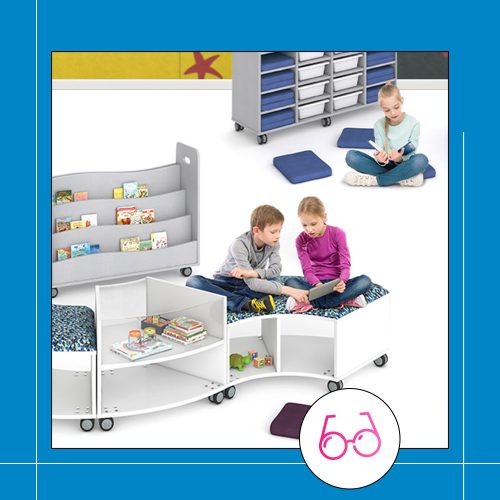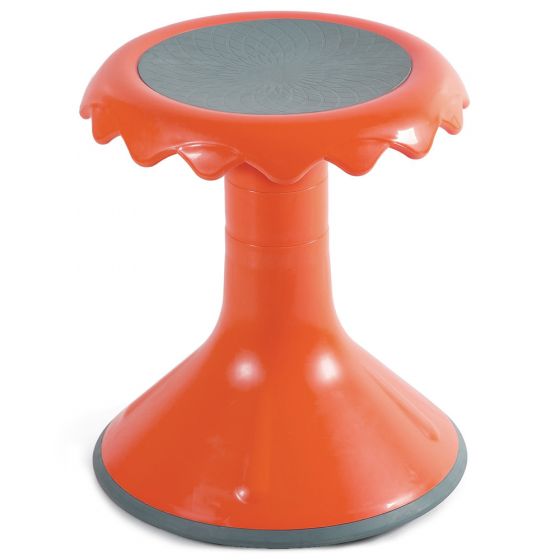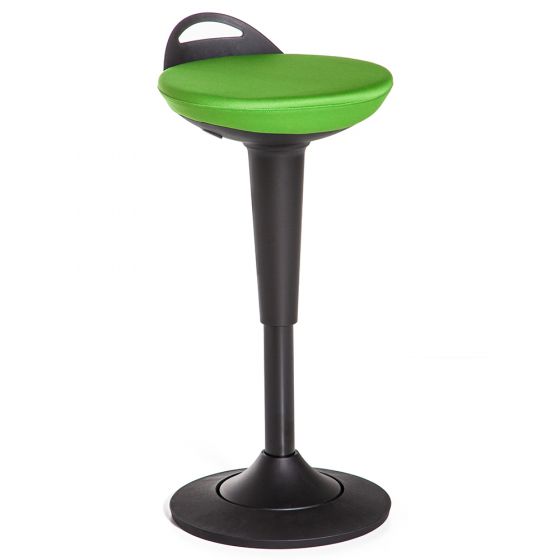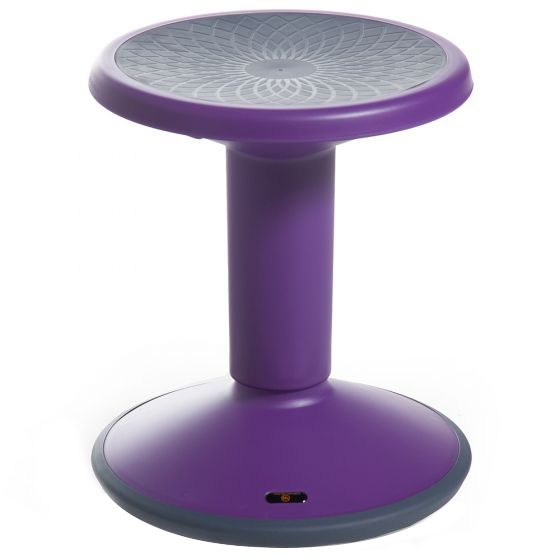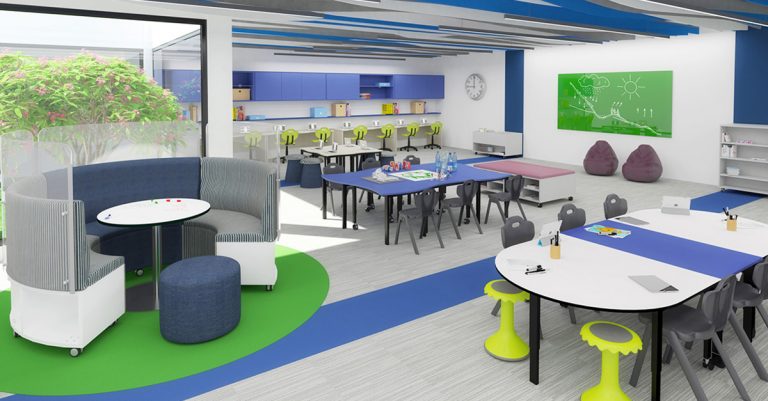Can you imagine a reality where a teacher would actually encourage their students to get up and freely move around in the classroom, to stand up out of their chairs and leave their desks behind for a portion of the class period? Based on your own past experiences in the classroom, this idea might sound as outlandish as the teacher letting the students lead the class for the day or letting them leave school early for the day. After all, when you picture the most perfect, the most well-behaved classroom, what do you see? A teacher at the front of the room, speaking to rows and columns of desks, with students sitting up straight with their hands folded neatly. There’s no movement going on whatsoever.
Surprisingly, as it turns out, there are actually some very real, very quantifiable benefits to bucking this stereotype of the stoic, well-behaved classroom and incorporating movement into the lesson plans. That’s right: Contrary to popular belief, boosting movement in the classroom can actually boost a student’s ability to learn. But what exactly are the benefits of incorporating movement? And what are its specific effects on learning? Not to mention, how can movement be incorporated into the classroom in the first place? Let’s dive into the facts and look at what some teachers are doing and the positive changes they’re seeing as a result.
The Effects of Movement on Learning
It’s one thing to claim that incorporating movement into the classroom boosts learning, but it’s something else completely to have veritable facts to back up those claims. Thankfully, there’s plenty of research that supports the idea of boosting movement to boost learning in the classroom. The benefits of IBMAs, or integrated movement-based activities, went from being a simple theory to a hard fact when scientists discovered the existence of brain-derived neurotropic factors (BDNF) — a substance in the brain that is increased by movement. BDNFs are increased by movement, which, in turn, increases brain function by increasing the communication that happens between the cerebellum and the rest of the brain. Prior to this discovery, scientists already theorized about the positive impact of so-called “brain breaks,” also known as movement-based activities, between lessons — but the discovery of BDNFs solidified the fact that boosted movement boosts learning. In short, increasing physical activity between lessons gets the blood flowing, which gets more oxygen to the brain, which increases neural connectivity and stimulates the growth of nerve cells in the hippocampus — in other words, the part of the brain responsible for learning and memory. This movement increases attention, sharpens memory, raises brain activity and cognitive function, lightens moods, alleviates stress and — best of all — boosts learning.
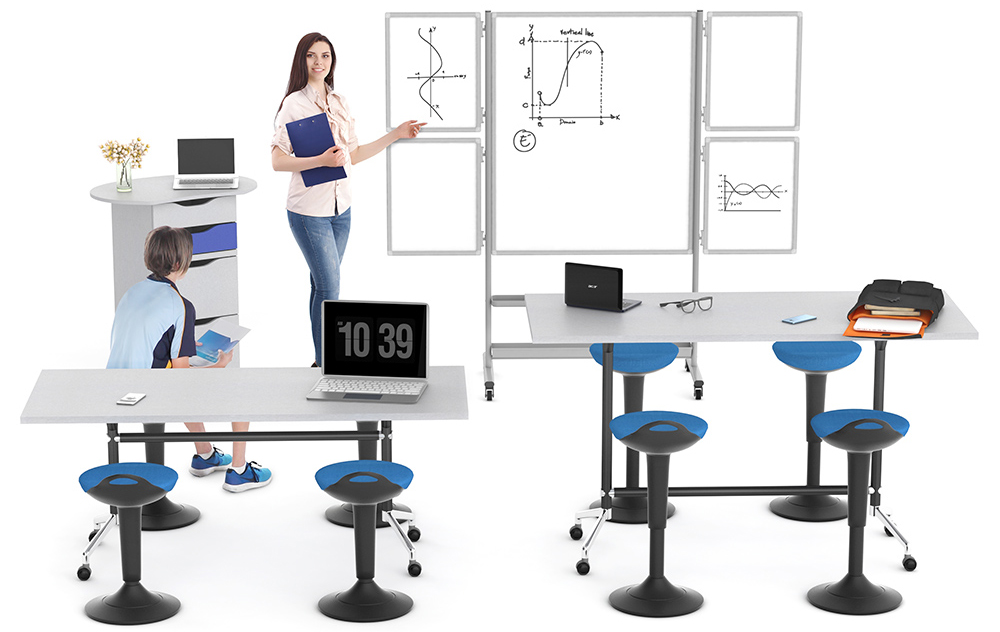
Benefits of Incorporating Movement Into the Classroom
Now that it’s clear how movement impacts your ability to learn, how exactly can movement help in the classroom specifically? Here are a few of the most beneficial aspects of incorporating movement into the classroom.
Movement Engages Students
By allowing students to move freely and get active, they effectively release all of their pent-up energy and increase the flow of oxygen to their brain. This helps them to focus when it comes time to learn.
Movement Increases Comprehension and Processing
By increasing oxygen to the brain and helping students focus by moving around freely before or in the middle of the lesson, the students are able to comprehend and process the information much more easily. This is because the nerve growth in the hippocampus has been stimulated by the increase in oxygen.
Movement Decreases Unwanted Behaviors
If you give students the opportunity to burn off some of that energy at the start or in the middle of class, they are much less likely to disrupt the class or fidget in their seats — this is because they’ve already exerted the behaviors they’re usually so anxious to exert when forced to sit still and remain calm.
Movement Promotes Fun in the Classroom
This one is simple: movement-based activities are, plainly and simply, a lot of fun. Students can walk away with memories of a fun experience in your classroom, even if the “brain break” only takes up a few minutes of a 60-minute period and look forward to the next day’s class as a result.
Movement Provides a Much-Needed Brain Break
The importance of giving students a brain break cannot be overstated. The heaps upon heaps of research presented above support this notion, and the boosted learning that occurs in classrooms with boosted movement backs it up, as well.
Misconceptions About Movement in the Classroom
For some teachers, the notion of added movement in the classroom might sound blasphemous. This has everything to do with the misconceptions that exist about students who fidget or doodle or squirm in their seats. Some may think that this sort of behavior is indicative of a student who isn’t paying attention and adding movement to the classroom would only hurt them instead of help them by showing them it’s okay to act this way. In truth, though, the research above proves that this sort of behavior can be amended not by scolding or telling the student to “knock it off,” but instead allowing them — and the rest of the class — to let it all out (and learn something in the process) through integrated movement-based activities.
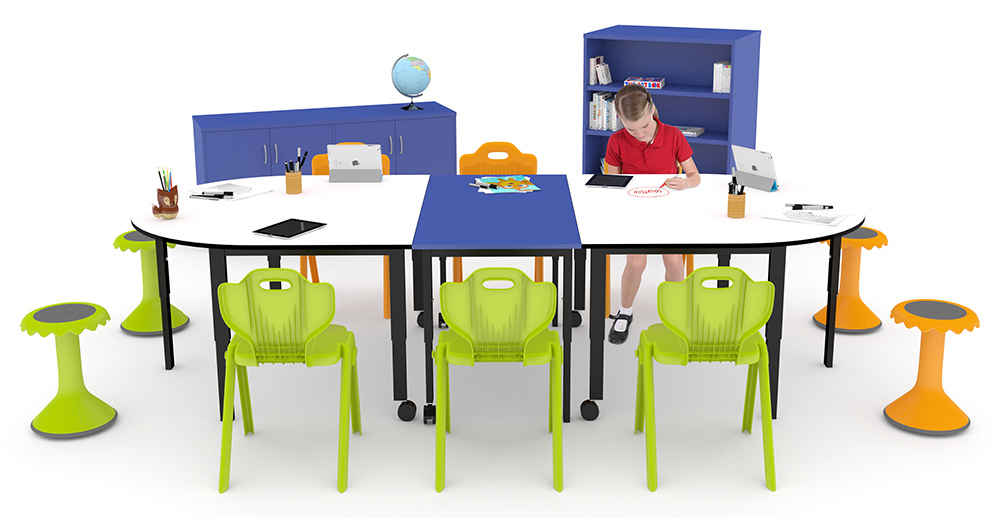
Ways to Add Movement Into the Classroom
Looking for ways to add movement into the classroom? Consider some of these options listed below.
- Utilize calming or relaxing brain breaks, such as yoga or tai chi exercises
- Add gestures to lessons to add more meaning to the words you’re speaking
- Ask students to act out readings or lessons
- Hold class outside and implement the playground or a game into the lesson
- Allow students to draw illustrations of the day’s lessons to show what they learned
- Implement agile furniture, such as Happy Stools, Zip Active stools or Motion Pivot stools, or any one of these other great seating options
The Bottom Line: Boost Movement, Boost Learning
At the end of the day, the evidence is clear: if you boost movement in the classroom, you also boost learning. It’s surprising how different this is from the standard notions about classroom etiquette, but the numbers don’t lie — adding movement into the classroom is an effective and fun way to increase a student’s ability to learn. There are all sorts of ways to incorporate movement into the classroom, but, as you’ve seen, one of the best ways is through the use of agile furniture.
BFX Furniture is a great place to find the agile furniture you need to boost movement and boost learning. From chairs to desks to mobile storage and accessories, BFX Furniture’s line of robust educational furniture can be easily moved to promote movement and allow for multiple different seating options in the classroom. BFX believes in providing high-quality, durable and innovative furniture that is made to withstand rough and heavy use — both day in and day out. By incorporating BFX Furniture along with other movement-based activities into the classroom, teachers and students alike can benefit from the boosted movement and the boosted learning that just can’t be found in those quiet, calm classrooms of the past.
Contact BFX Furniture today to learn more about how to incorporate agile furniture into the classroom.


